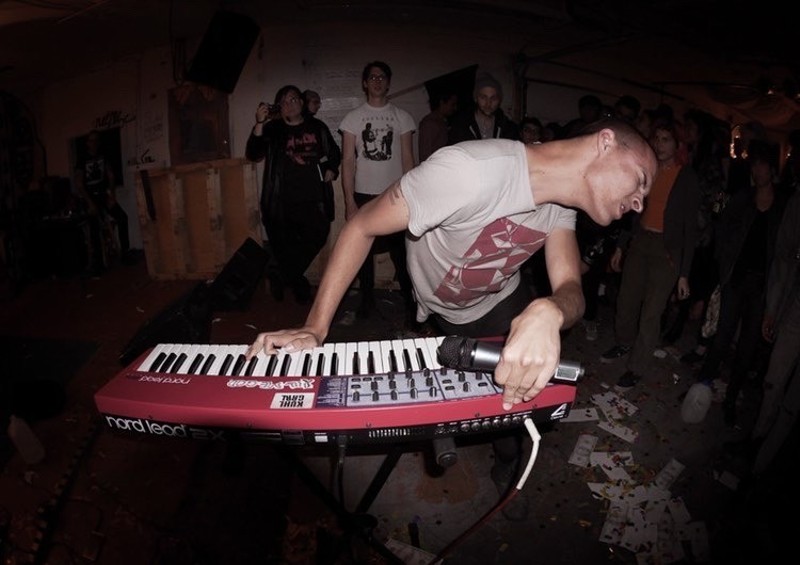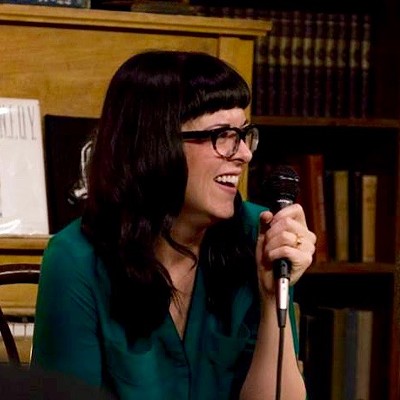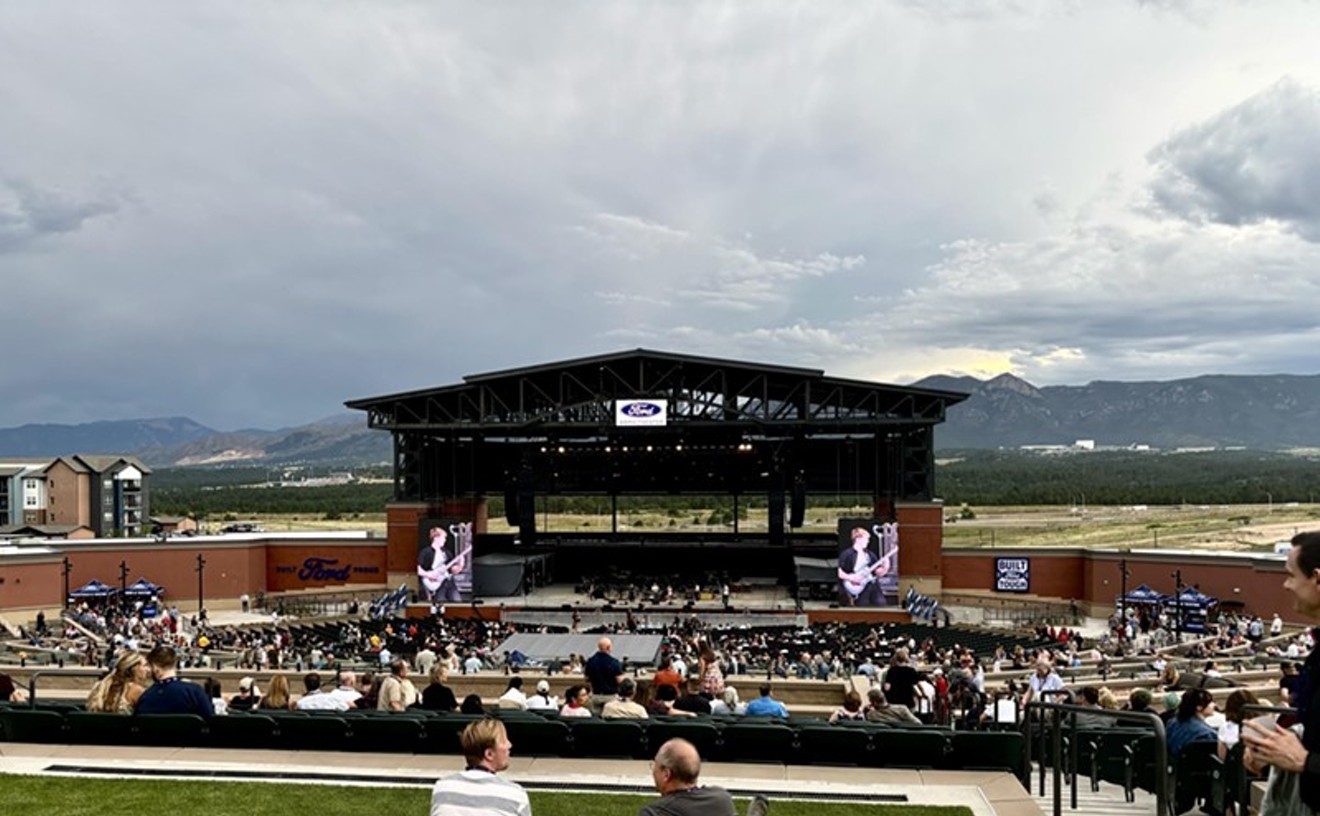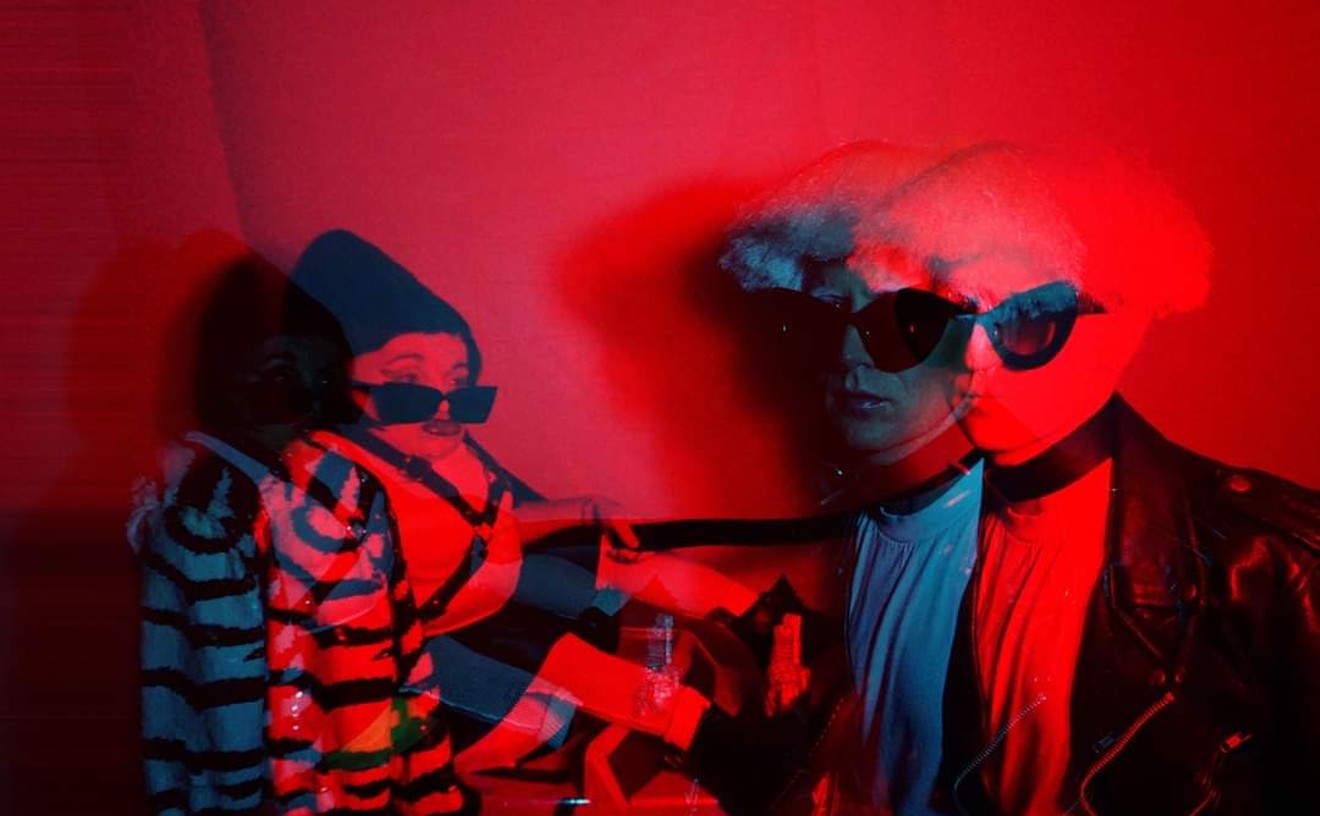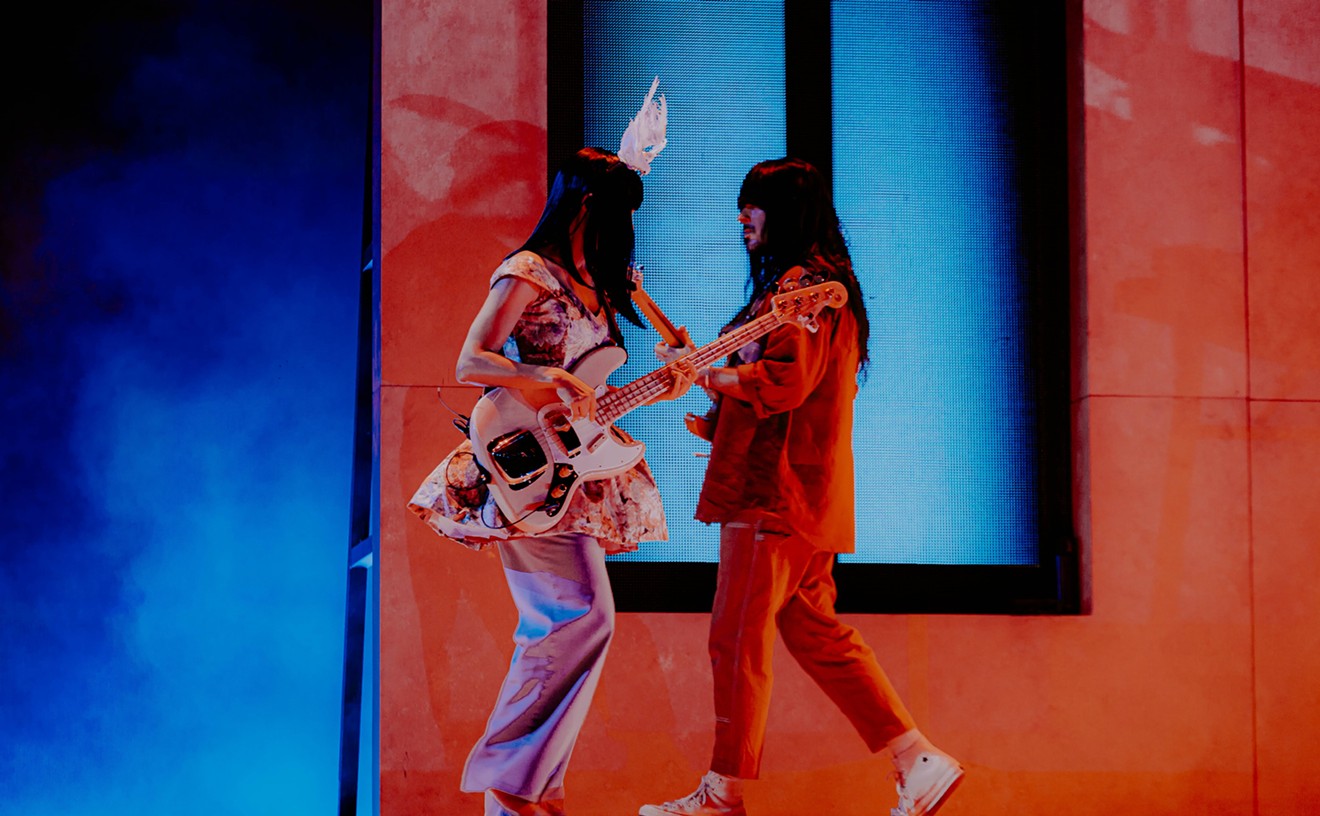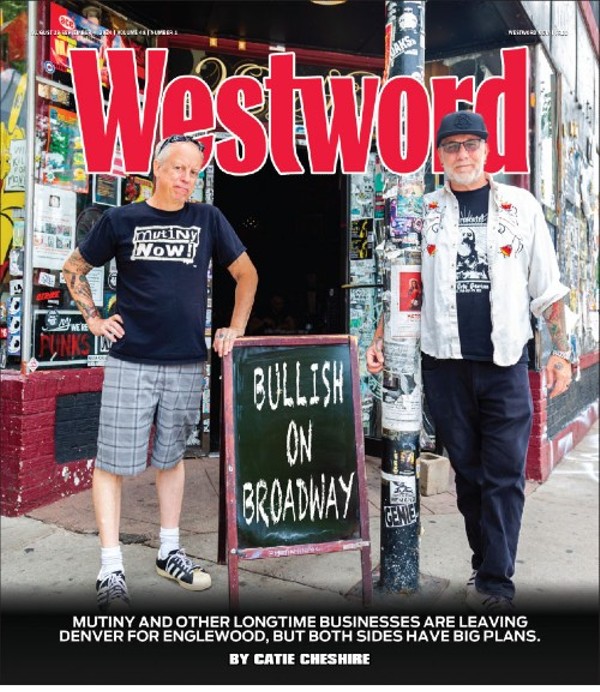Luke Thinnes is tired of answering reporters’ questions about the struggles of running the DIY venue Rhinoceropolis in Denver in 2019.
That’s three years after the fire at the Ghost Ship warehouse in Oakland killed 36 people at a DIY dance party. Three years after Rhinoceropolis and Glob, adjacent living spaces and venues on Brighton Boulevard, were evicted by the city over safety-code violations. Three years after activists, myself included, worked with Denver city officials at an attempt to improve the fate of artists living on the margins. And nearly two years since my friend, former Rhinoceropolis resident, artist, musician and DIY champion Colin Ward, died by suicide at 27.
In the face of all that, Thinnes — who books shows, runs the soundboard and manages the door at Rhinoceropolis — wants to talk about why he’s still helping to run a venue, not just why it’s hard. Because he doesn’t see it as hard; rather, he finds value in the work he does around art.
“It kind of weighs me down to view this as a struggle,” says Thinnes. “It’s a common question for interviews — about the struggles of being an artist, the struggles of running a venue. And it really doesn’t do me any good to view it as a struggle, so I don’t. For me, it’s more like a labor of necessity.”
Thinnes has found meaning through his involvement with Rhinoceropolis. He’s been playing shows at the venue since he was a teenager. And as Rhinoceropolis has transitioned from an unpermitted living space and underground arts and music hub into a permitted live-music venue, he’s taken on a leadership role.
Since reopening earlier this year, the venue has continued its unofficial mission, serving as a launching pad for emerging artists, just as it did when it first opened in 2005. No one takes on a DIY operation with any notion that it will be profitable. Like most people operating DIY venues, Thinnes does it with little if any money, inspired by creating a place for total artistic freedom, unfettered by the commercial demands of bigger venues.
At Rhinoceropolis and similar spaces, musicians looking to experiment and create can do so without having to worry about selling tickets or packing a bar.
“If a band’s never played a show before, that’s a moment that they’re never going to forget, and they’ll learn a lot from it,” Thinnes says. “If a band plays a show at Rhino, someone is going to come up to them and tell them it was great.”
At larger venues, audiences come for the headliners. Openers are mostly ignored. At Rhinoceropolis, failure is tolerated, commercial viability is hardly a consideration, and as a result, new forms of creative expression are born.
“The people who go to Rhino are there to experience a mixed bill, see something they’ve never seen before. That’s a tremendous benefit to everyone,” Thinnes says. “The openers are where it’s at. They are eventually going to be the headliners. It just keeps moving up. A scene forms, people get older, more kids show up — it’s amazing.”
Thinnes notes that Rhinoceropolis and its fellow DIY venue Seventh Circle Music Collective are both doing as much as possible to give young people who would be barred from bars and clubs an outlet to discover and play music.
Seventh Circle, is located in an industrial section of the Sun Valley neighborhood off Federal Boulevard. It has operated aboveground since it inherited the garage space formerly known as Blast-O-Mat in 2012. The venue shares a DIY ethos with Rhinoceropolis, booking bands playing across a variety of genres. While collective members were put on alert after the Ghost Ship fire and the closure of Rhinoceropolis, the venue remained open after city inspectors visited. The space had correct permitting that had been secured when it was still called Blast-O-Mat, and the venue — under the guidance of sound person and DIY champion Aaron Saye — was code-compliant.
Camille Montgomery, a senior volunteer with the collective, knows just how much power it takes to keep these spaces open to all.
“Seventh Circle has worked so hard to be accessible, to be a safe place, to be up to fire codes and safety standards. We’ve been adamant about that,” says Montgomery. “The sheer amount of people who were behind Seventh Circle and were willing to work on safety and code stuff [after Ghost Ship] was astonishing. Seventh Circle Music Collective is a music collective: It’s for the people, by the people.”
Montgomery has been a volunteer at Seventh Circle off and on since 2013. In 2016, the year of the Ghost Ship fire, she was living in Oakland and saw firsthand how the fire and subsequent closings of all-ages spaces harmed the art and music community.
“I booked a couple of benefit shows to give back to the DIY scene in the Bay Area, because as soon as Ghost Ship happened, there was this kind of witch hunt,” says Montgomery. “It’s already so unaffordable, and it’s like, these kids need solace. They need music and a place to be and a place to go.”
Seventh Circle’s success has come from a solid group of volunteers who consistently show up to work door shifts and run sound, Montgomery says. Graduates from Girls Rock summer camp have gone on to form bands and become photographers within the scene that surrounds Seventh Circle; young punks and more seasoned musicians set up shows at the space. The collective even runs a fundraiser on the online platform Patreon to help pay for the costs of operating the venue.
Yet Rhinoceropolis and Seventh Circle aren’t the only models for running an all-ages space. There’s Gyspy House, a cafe that doubles as a hub for artists. There’s no doubt that the Derani sisters, who own the place, have a DIY ethos. While they just opened their current location in the summer of 2019, they operated a coffee shop in Capitol Hill for well over a decade. It was a place for poetry readings, open mics, film screenings, spiritual gatherings, and Denver’s own version of the Soundsystem party — notoriously thumping, sweaty late-late-night dub-heavy dance extravaganzas.
Like many small businesses and DIY spaces, Gypsy House lost its original home at 13th Avenue and Marion Street to the pressures of gentrification in early 2016. The sisters spent the next few years searching for a new home they could afford — in Denver and outside of Colorado — before landing at their current home on South Broadway.
“We were around for so long. A lot of people met at Gypsy House: music groups, art groups,” says Dena Derani, stretched out on a couch in the new, sparkling Gypsy House. “It wasn’t about us, the people [who run it]; it’s the Gypsy. We brought the Denver community together in a way that I don’t know would have happened elsewhere. Yeah, I work here and I own it, but Gypsy House, to me, is its own entity and its own being. It is its own existence.”
For the organizers of Danza Divina, an art-focused collective and invite-only pop-up dance gathering for people of color and the queer community, Gypsy House’s relaunch was right on time.
“The collective’s intention is to cultivate, first and foremost, safety and maintaining joy throughout the evening and doing that with creating a safe space,” says organizer and dance teacher Alondra Taveras. “Especially where consent culture is practiced and everyone that attends also shares our firm values around anti-racism, anti-sexism, anti-homophobia and transphobia — and knowing it isn’t just a ‘fad.’ There are places that promote safety for POCs, but you know, it’s just a trend, instead of actually implementing these values, making sure it remains true throughout events.”
Taveras knows Gypsy House shares a steadfast commitment to those principles. In the stairwell at the cafe hangs a leftover piece of art from a Danza Divina event. The message is simple: “Consent is sexy.”
Unlike most restaurants and venues, Gypsy House still books events with a handshake or a text; artists at all levels can throw shows and parties and bypass hefty rental fees. And the owners have no expectations that events will guarantee a head count or big bar sales. They rely on their day-to-day business for a profit.
Many DIY spaces — especially those operating underground — have a tough time paying rent, maintaining sound equipment, keeping the lights on and the toilet paper stocked. There’s long been an ethic that any money made at a show goes to the bands and artists. That leaves a lot for venue operators to take care of.
One DIY space operator, Patrick, kept his space running from money he had saved working as a bartender. “But as that savings dropped rapidly, we realized we needed to take something,” he says. “Since we’re not an official establishment, there’s a lot of moral debate about putting money toward the rent and stuff. It’s a little over $2,000 a month or so, so it’s like $700 a person [split between the people who live in the space]. It’s standard [in Denver] nowadays. But it’s a lot. And I’m just doing the side-hustle lifestyle, gig-economy stuff.”
Thirty years ago, you could get into a punk show for $5; a DIY venue taking any more felt suspect. Those rates for DIY concerts have not gone up, while the price of rent and a mortgage has, making it ever harder for DIY spaces to make ends meet. To stay afloat, Patrick’s space has taken to throwing a handful of events a year in which all the money goes back into operating costs.
DIY bookers say the demand for all-ages venues has only grown in the past three years. When Rhinoceropolis reopened in 2019, show requests picked up right where they had left off.
Thinnes says this past summer, he had bands, DJs and various performances booked every other night, hosting dozens of acts from across the country and the world, all while pairing those bigger acts with Denver-based projects.
In its current incarnation, Rhinoceropolis has a sound system rivaling many of the city’s more expensive, less accessible spots.
“It’s hard to call it a struggle when you have twelve subwoofers and four mains that can compete with actual venues in town,” says Thinnes. “It sounds like an actual club from outside.”
Bands from Australia, Canada, Brazil and other countries have played Rhinoceropolis over the past few months, and big DJs have thrown parties in the space.
“When people fly out to deejay, they’re expecting a sound system of that size,” Thinnes says. “The fact that we can facilitate those people and do things we couldn’t do in the past — we’ve never had anything like that before.”
But beyond Rhinoceropolis’s ability to host larger shows, Thinnes says the reason he keeps it alive is for the next generation of artists.
“At that age, between 14 and 21, there’s such a tremendous amount of creativity. Creatively, you’re just, like, on fire,” Thinnes says. “I think when you stifle those really important years, you’re just extinguishing people creatively. You’re not giving them an outlet.”

Audio By Carbonatix
[
{
"name": "Air - MediumRectangle - Inline Content - Mobile Display Size",
"component": "12017618",
"insertPoint": "2",
"requiredCountToDisplay": "2",
"watchElement": ".fdn-content-body",
"astAdList": [
{
"adType": "rectangle",
"displayTargets": "mobile"
}
]
},{
"name": "Editor Picks",
"component": "17242653",
"insertPoint": "4",
"requiredCountToDisplay": "1",
"watchElement": ".fdn-content-body",
"astAdList": [
{
"adType": "rectangle",
"displayTargets": "desktop|tablet"
},{
"adType": "rectangle",
"displayTargets": "desktop|tablet|mobile"
}
]
},{
"name": "Inline Links",
"component": "18838239",
"insertPoint": "8th",
"startingPoint": 8,
"requiredCountToDisplay": "7",
"maxInsertions": 25
},{
"name": "Air - MediumRectangle - Combo - Inline Content",
"component": "17261320",
"insertPoint": "8th",
"startingPoint": 8,
"requiredCountToDisplay": "7",
"maxInsertions": 25,
"watchElement": ".fdn-content-body",
"astAdList": [
{
"adType": "rectangle",
"displayTargets": "desktop|tablet"
},{
"adType": "rectangle",
"displayTargets": "desktop|tablet|mobile"
}
]
},{
"name": "Inline Links",
"component": "18838239",
"insertPoint": "8th",
"startingPoint": 12,
"requiredCountToDisplay": "11",
"maxInsertions": 25
},{
"name": "Air - Leaderboard Tower - Combo - Inline Content",
"component": "17261321",
"insertPoint": "8th",
"startingPoint": 12,
"requiredCountToDisplay": "11",
"maxInsertions": 25,
"watchElement": ".fdn-content-body",
"astAdList": [
{
"adType": "leaderboardInlineContent",
"displayTargets": "desktop|tablet"
},{
"adType": "tower",
"displayTargets": "mobile"
}
]
}
]

